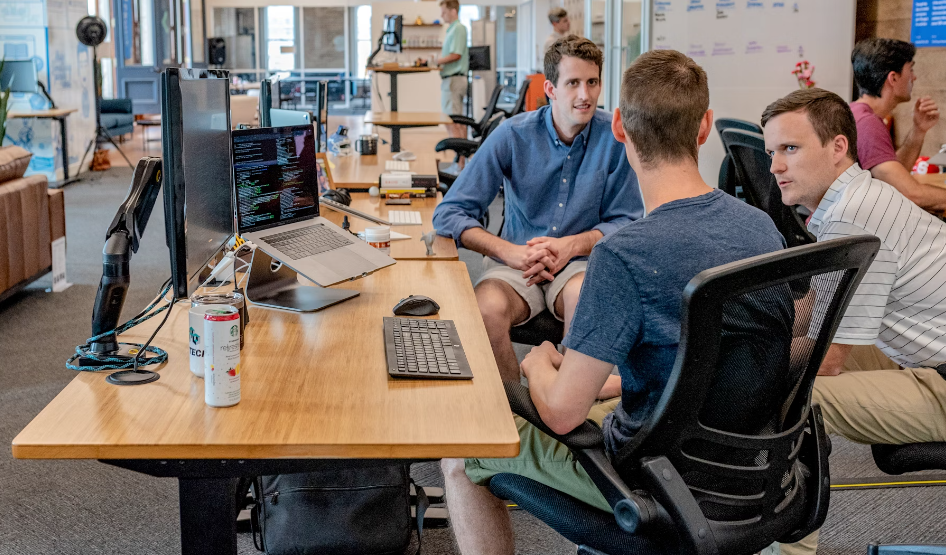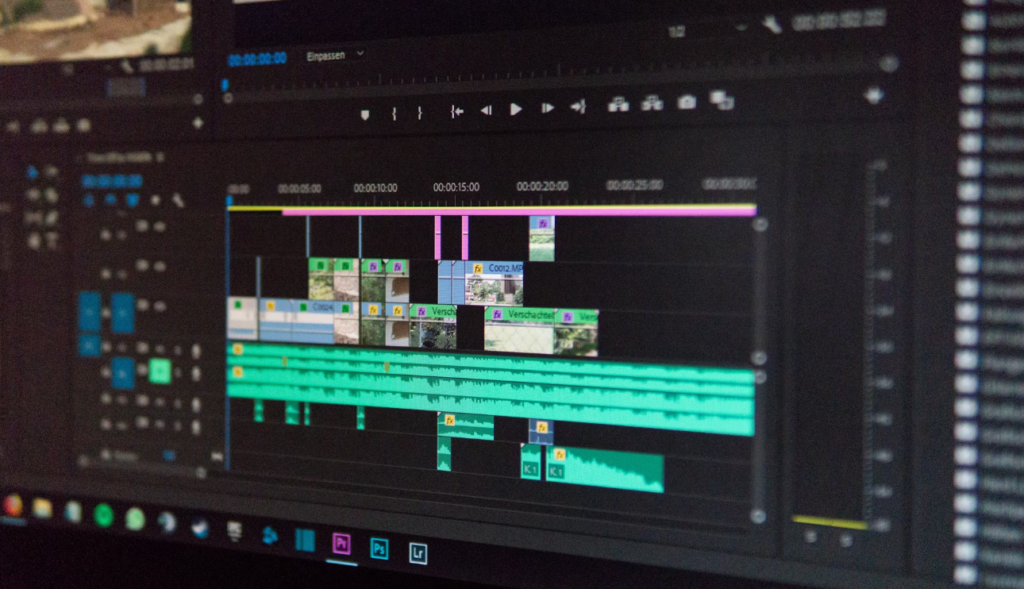When and How to Hire a Video Editor: Insights from Tony Santos
As a content creator, one of the most significant decisions you’ll face is when and how to hire a video editor.
To shed light on this topic, Jay Clouse from the Creator Science Podcast interviewed Tony Santos, an experienced video editor who has worked with notable YouTubers like Thomas Frank.
We cover the following topics:
- When to hire an editor
- What to pay editors
- How to align expectations
- Different pricing models
- How to reach out to potential editors
- The importance of long-term relationships
- Balancing multiple clients
- Understanding industry standards

When to Hire an Editor
Many creators struggle with determining the right time to bring an editor on board. Tony Santos offers some valuable advice on this matter:
- Consider hiring when you can afford consistent work for the editor
- Ensure you can pay them fairly
- Be ready to commit to a long-term working relationship
“I think if you can actually afford even just one video a month and you can negotiate that with the editor, then I think you’re ready.”
Santos emphasizes the importance of understanding that the editor’s livelihood will become part of your monthly considerations.
He also stresses the significance of finding the right person and building trust, which can take time.
Santos shares his personal experience:
“Even now, let’s say for my channel, like things are slowly picking up and I have a lot of work I have to do.
Realistically, given my workload, I would love help, and there’s a certain amount of money that I would want to pay someone for said help, but I’m not financially there yet to promise anyone anything, so I just don’t do it.”
This honest assessment demonstrates the importance of being financially prepared before making the commitment to hire an editor.

What to Pay Editors
Determining fair compensation for editors can be challenging, especially given the wide range of rates in the industry.
Santos shares his personal experience and perspective:
- Starting rates can be as low as $10-$30 per video
- More established editors may charge hundreds or thousands of dollars per month
“I would want to pay no less than $450 a video, and the only reason I stick to that number is because I want to do slightly better than what Tom was able to do for me when we first started.”
It’s important to note that rates can vary based on factors such as:
- Video length and complexity
- Editor’s experience and skill level
- Geographic location
- Long-term commitment vs. one-off projects
Santos elaborates on his experience with different payment rates:
“I’ve been paid $10 a video, $30 a video. A guy tried to negotiate with me $80 a week, and it was five videos a week, which I almost took, but that’s just because I didn’t know any better.”
He also mentions the eye-opening experience of working with Thomas Frank:
“Ever since I met Thomas, that was my real eye-opener as to what is possible given the right mindset and working with the right person that understands you as well.”

Aligning Expectations
One of the most crucial aspects of hiring an editor is ensuring that both parties have aligned expectations.
Santos recommends:
- Clearly communicate the expected work product
- Discuss the estimated time required for each video
- Be transparent about your budget and long-term plans
“I think the Creator, as long as they understand their own videos and what they expect from the editor, then I think those conversations can be easier.”
Santos suggests that creators should initiate these conversations, as they have a better understanding of their content and requirements.
He also emphasizes the importance of understanding the time investment required for editing:
“On average, this takes me 20-30 hours. If you don’t feel like 450 is enough, then just give me the amount of hours that you feel you value to give me.”
This level of transparency helps both parties avoid misunderstandings and ensures fair compensation for the work involved.

Pricing Models: Per Project vs. Hourly vs. Retainer
Different pricing models have their pros and cons. Santos shares his insights on the most common approaches:
- Per Project Pricing:
- Most common in the online space
- Provides clarity on total cost for the creator
- Allows editors to manage their time more flexibly
- Hourly Pricing:
- More common in traditional settings
- Can lead to misaligned expectations if not clearly communicated
- Requires detailed tracking of time spent
- Retainer:
- Provides consistency for both parties
- Often results in lower rates due to long-term commitment
- Allows for better work-life balance for editors
“I think in the online space, per project is definitely the most common because it’s even what I usually would agree to as well.”
Santos recommends that regardless of the pricing model chosen, both parties should get the agreement in writing to avoid misunderstandings.
He explains the benefits of per-project pricing:
“The reason I do per project is because I try to remember, like as long as this is a long-term thing, I will always accept less money for consistency rather than trying to maximize my dollars per hour.”
He also highlights potential issues with hourly pricing:
“Let’s say it took me like 15 hours to edit the video in completion, but you tell me, ‘Hey, that should have taken you 10.’ And it’s like, why should it have taken me 10? We never agreed to that. I never said I was going to take 10 hours.”

The Importance of Long-Term Relationships
Throughout the interview, Santos emphasizes the value of building long-term relationships between creators and editors.
He explains:
“When something is longer-term, you can negotiate and have less pricing, but that’s because you’re at least getting consistent work, and then you also know that there’s a growth factor to this that has been discussed.”
This approach benefits both parties:
- Editors gain financial stability and the opportunity for professional growth
- Creators build a consistent team and can potentially negotiate better rates
Santos shares his personal preference:
“I would say if editors are out there listening, or even for the creators out there, if you really want someone, we’re probably more inclined to stick with one person longer-term as long as you pay more.”

Balancing Multiple Clients
For editors, deciding whether to work with multiple clients or focus on a single long-term relationship is a crucial consideration.
Santos offers his perspective:
“I would say depending on the editor’s work-life balance and what they strive for, I would say it’s probably best to work with less people who pay morae, as opposed to a lot more clients who pay somewhat okay.”
He explains the reasoning behind this:
- Fewer clients reduce mental stress and juggling of projects
- Higher-paying clients often provide more consistent work
- Long-term relationships allow for growth and increased value over time
“I even struggle just juggling two sometimes, and the reason for that is because the amount of time that I put into the projects that I work on, it’s just not a good situation for me.”

Understanding Industry Standards
Santos introduces the concept of industry standards and resources for editors to understand their value:
“There’s also a group called The Blue Collar Post Collective, and in that group, they do a wage survey every year where anyone in the production sphere can go ahead and put how much money they make that year, what their job title is, how long they’ve been doing it.”
He encourages editors to use these resources to compare their salaries and rates to others in the industry.
This knowledge can help both editors and creators understand fair compensation levels.
Santos also shares an eye-opening example from the Hollywood editing scene:
“I learned there’s like this one guy in Hollywood whose day rate, which is how much he makes a day, is two grand, and I was like, holy cow, I never knew that number was possible.”
This information can inspire editors to recognize their potential value and encourage creators to understand the range of rates in the industry.

How to Reach Out to Editors
When you’re ready to hire an editor, approaching potential candidates can be daunting. Santos offers advice on how to make a good first impression:
- Keep communication professional
- Introduce yourself and your project
- Provide links to your work and inspirations
- Be upfront about your budget range
“I personally don’t like it when people message me saying ‘yo’ … I’d rather you just approach me [professionally].”
A good outreach message should include:
- Who you are
- What you’re messaging about
- Links to your body of work
- Inspirations for your content
- Budget range you’re considering
Santos elaborates on what he looks for in an initial message:
“The best way that I like to get messaged is: who are you, what are you messaging me for, give me some links to the bodies of work that you’ve worked on and are looking for me to work on as well, any inspirations.”
He also stresses the importance of discussing budget early in the conversation:
“Please just put the amount of money that you’re considering paying me because that can always be negotiated, but also I just like to be realistic.”
By following these guidelines, you’re more likely to receive a positive response from potential editors.

Key Takeaways on How to Hire a Video Editor
- Hire an editor when you can afford consistent work and pay them fairly
- Consider starting rates per video, but be prepared to negotiate based on experience and project complexity
- Align expectations by clearly communicating your requirements and understanding the editor’s process
- Choose a pricing model that works for both parties, and get the agreement in writing
- Approach potential editors professionally, providing all necessary information upfront
- Prioritize long-term relationships for mutual growth and stability
- Understand industry standards to ensure fair compensation
- Be transparent about your budget and project requirements from the start
Hiring an editor is not just about finding someone to cut your videos – it’s about building a long-term partnership that will help grow your channel and improve your content.
Take the time to find the right fit, and be prepared to invest in this crucial relationship.
As Tony Santos emphasizes throughout the interview, mutual respect, clear communication, and fair compensation are the foundations of a successful creator-editor relationship.
Following these guidelines, you’ll be well on your way to finding the perfect editor to help take your content to the next level.
(Source: The Creator Science Podcast with Jay Clouse and Tony Santos)




